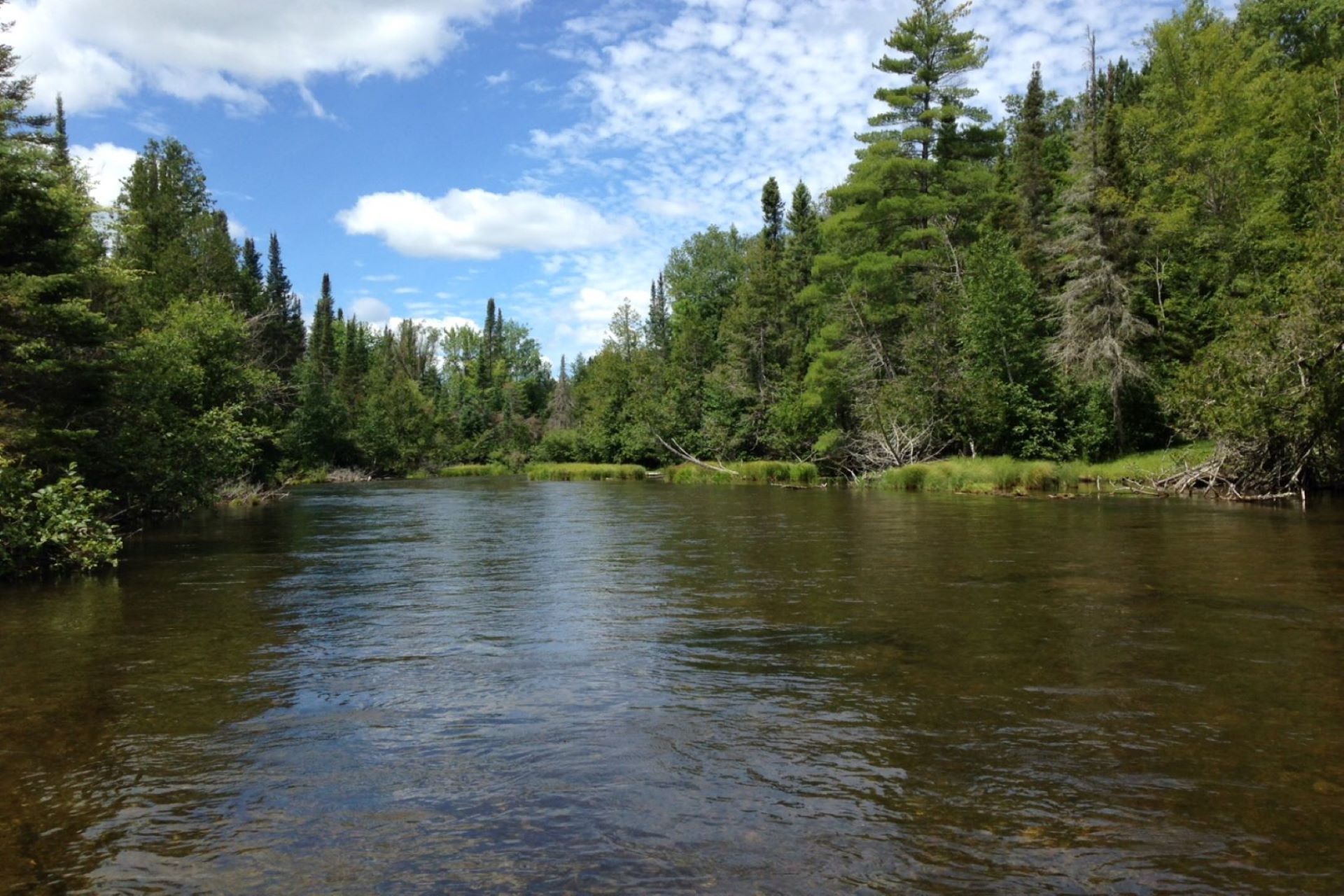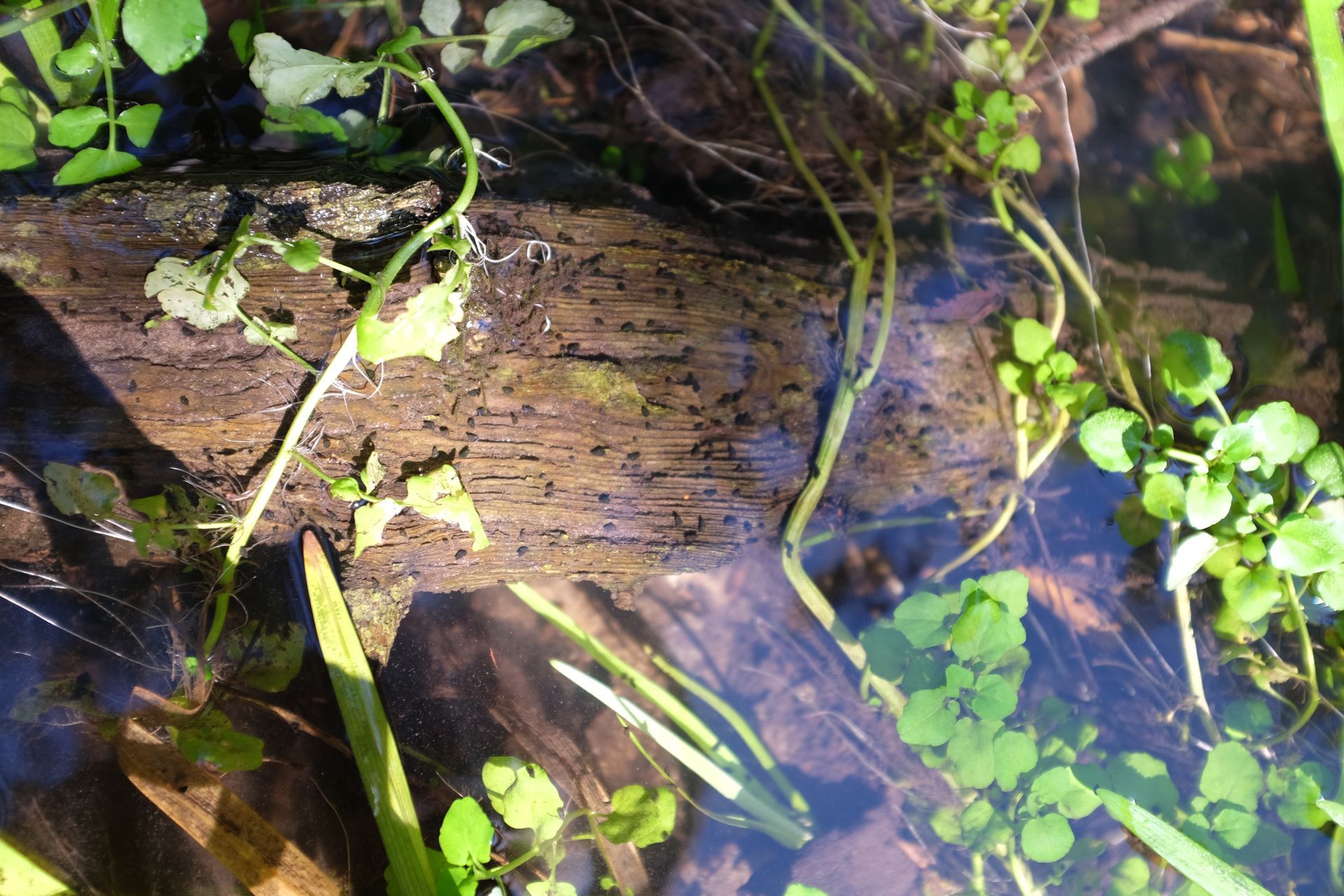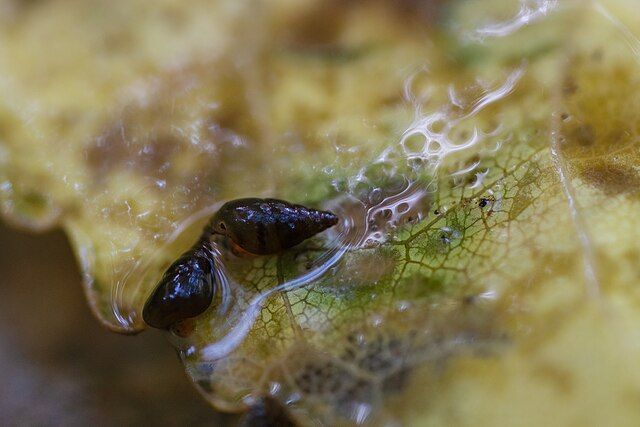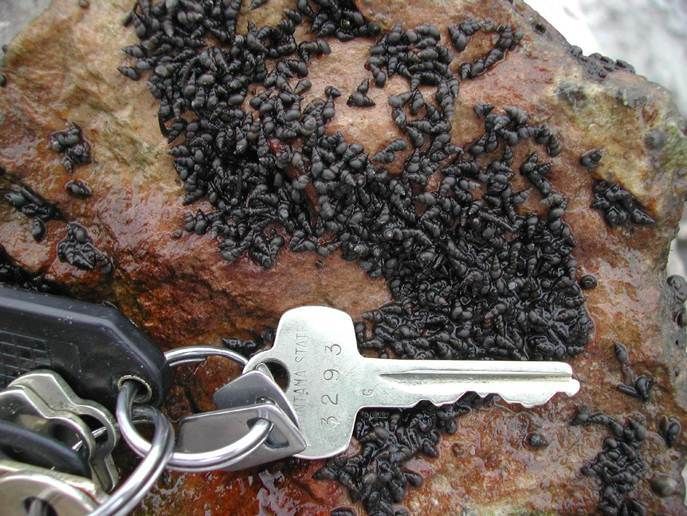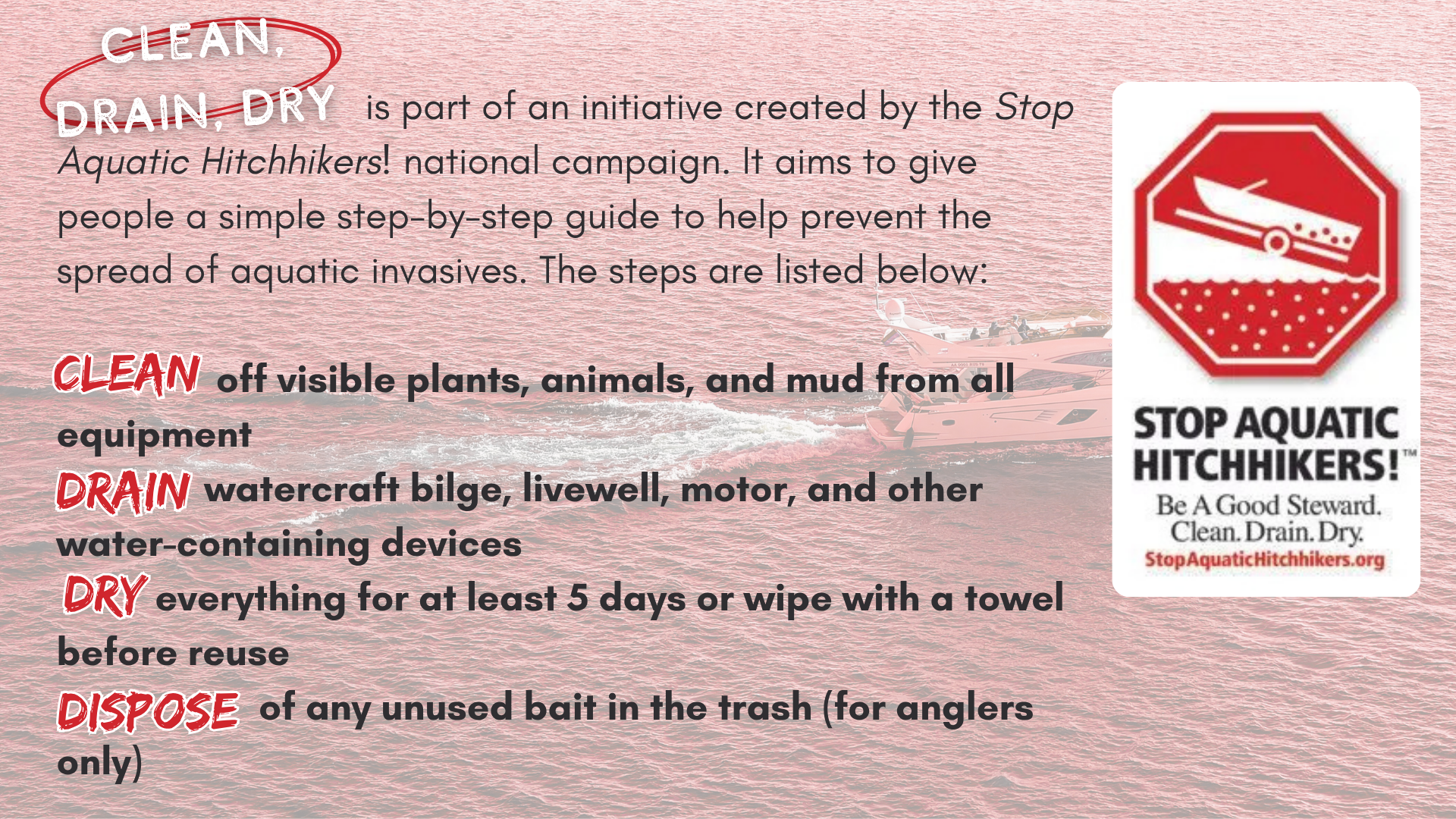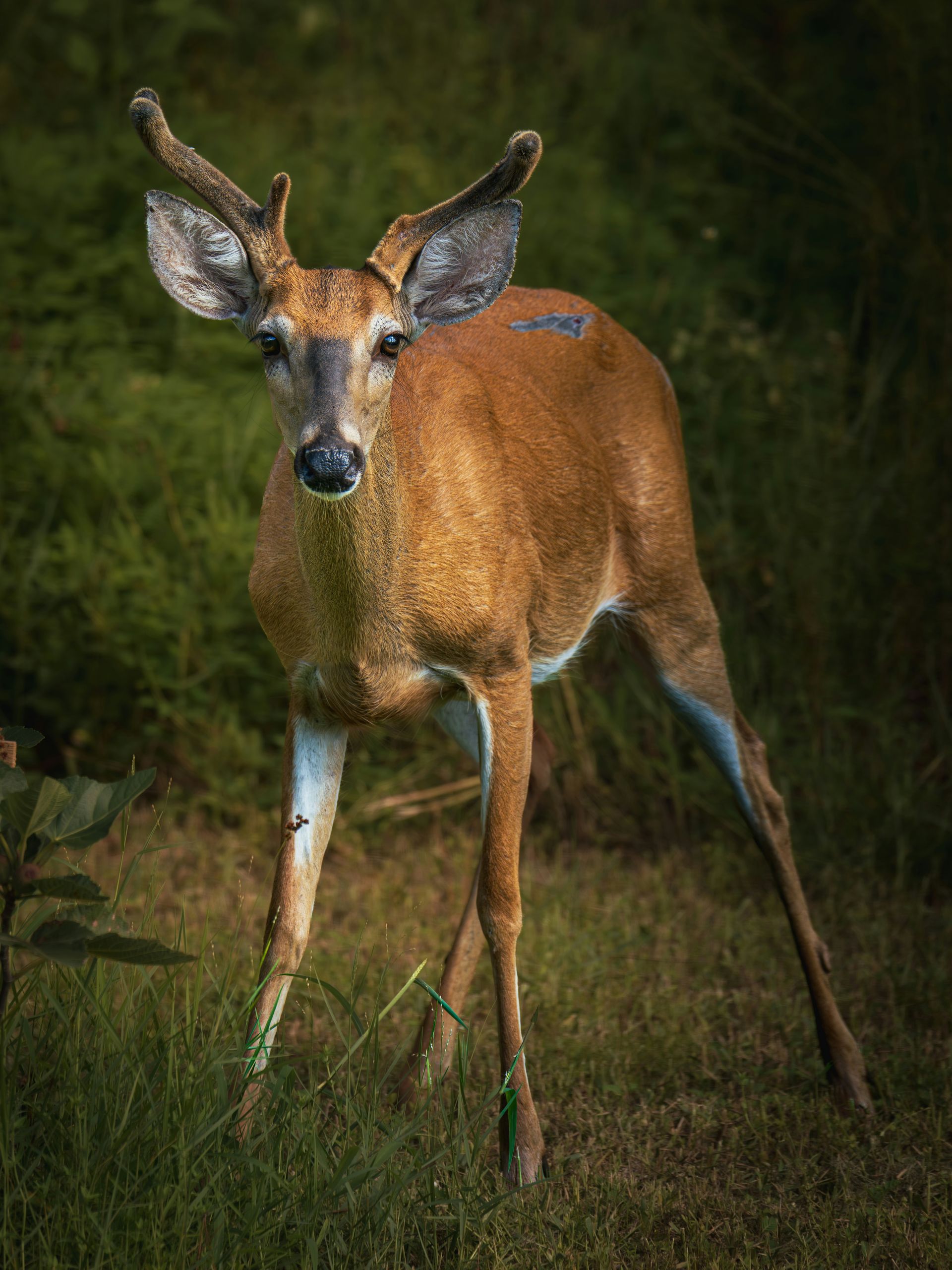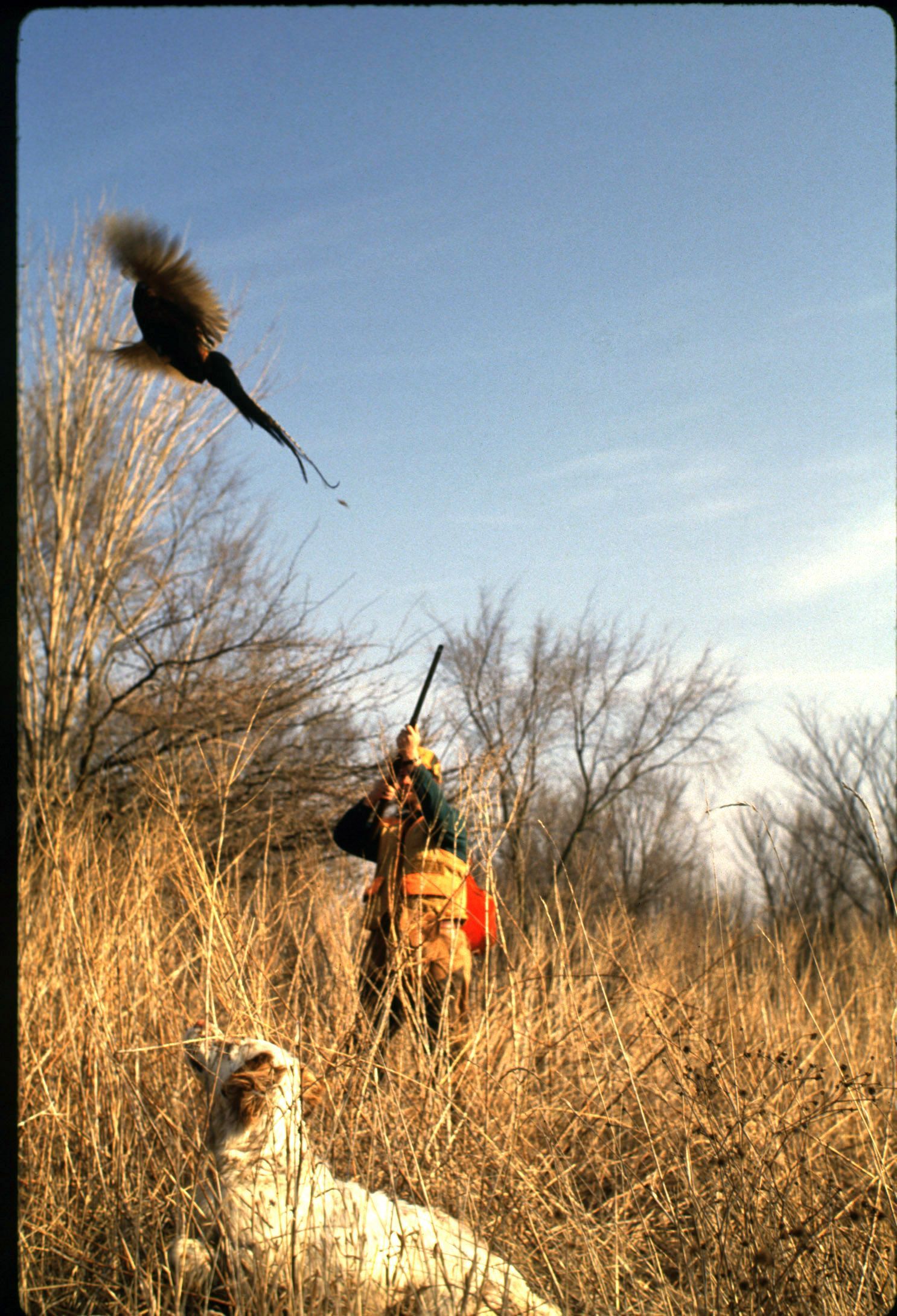While species spotlights are normally focused on native plants, fish, and wildlife, the invasive ones are just as important to talk about. With summer kicking off soon and boating season getting underway, aquatic invaders are ever present throughout Michigan’s waterways. However, there is one species that is very hard to manage due to its tiny size and difficulty to spot: the New Zealand mud snail.
Identification
New Zealand mud snails are very hard to identify due to their tiny size. They average around 1/8 inches long, only a fraction of the size of a penny. They have an elongated shell with a
dextral (right-handed opening) and 5-6 whorls. Some morphs, including most of those from the Great Lakes, exhibit a
keel (or prominent ridge) in the middle of each whorl. Their shells can vary in color from grey to light brown and black. Mud snails also have a movable cover at the opening of their shells called the operculum that allows them to protect themselves from pollutive chemicals (Washington Department of Fish and Wildlife,
U.S. Geological Survey,
Invasive Species Centre,
Michigan Department of Natural Resources).
Size comparison showing New Zealand mud snails next to a dime. Courtesy of the U.S. Geological Survey.
New Zealand mud snails shown under a microscope. Courtesy of the U.S. Geological Survey.
Habitat
New Zealand mud snails are originally from New Zealand as their name suggests, but they have spread throughout the western United States and into the Great Lakes region. In Michigan, they have been found in the Au Sable, Boardman, Grass, Pere Marquette, Pine, and Upper Manistee rivers (Michigan Department of Natural Resources).
Mud snails prefer to occupy streams and the littoral, or shallow zone of lakes. They can be found up to 60 meters deep in some areas. They inhabit aquatic habitats with various substrate types like sand, silt, gravel, and vegetation. Individual snails can live in clear waters, but they thrive in disturbed or degraded waters with a high concentration of nutrients. They can also tolerate a wide range of temperatures from near freezing to 93 degrees Fahrenheit (University of Michigan Museum of Zoology).
The Au Sable River, one of the many areas where mud snails have been found in Michigan. Courtesy of the Michigan DNR.
A graphic showing the littoral zone in a water body where mud snails are commonly found. Courtesy of Michigan State University Extension.
Diet
Mud snails mostly feed on algae, sediment, plants, phytoplankton, and dead organic material. They are considered scrapers/grazers. Much of their diet is the same food that would otherwise be consumed by native snails and insects. Mud snails reportedly feed primarily at night, although non-brooding females and juveniles tend to feed more during the day (Washington Department of Fish and Wildlife,
University of Michigan Museum of Zoology).
New Zealand mud snails are grazers, scraping up food from logs or other surfaces. Courtesy of the Michigan DNR.
A close-up of two mud snails on a leaf, potentially feeding. Courtesy of Judi Lapsley Miller, Wikimedia Commons.
Behavior
Local Concern
New Zealand mud snails reproduce via cloning, which means that females can develop complete embryos without the need for fertilization. According to the Michigan Department of Natural Resources (DNR), one female within the span of a year can result in a colony of up to 40 million snails. When large amounts of snails are present, food can become scarce for many other invertebrates like caddisflies and mayflies. This in turn negatively affects fish populations because they don’t have native insects to feed on. Fish will consume New Zealand mud snails but they are difficult to digest and offer little nutritional value. Substituting mud snails in place of native food sources can reduce the growth and condition of many of these fish, including key sportfish like trout. Additionally, mud snails can alter the nitrogen fixation rate in the water by consuming a high amount of green algae. This diminishes the health of an ecosystem significantly because green algae are responsible for adequate nitrogen fixation (Invasive Species Centre,
Michigan Department of Natural Resources).
New Zealand mud snails congregating on a rock. Courtesy of Dan Gustafson, U.S. Fish and Wildlife Service.
A range map showing how widespread mud snails have become throughout the United States. Courtesy of the U.S. Geological Survey.
What You Can Do
New Zealand mud snails can easily be transported on boats, anchors, and fishing gear like waders. Due to their small size, it’s very important to inspect and clean all gear after each use to help keep them from spreading further into Michigan’s waterways. The Michigan Department of Natural Resources (DNR) offers a few key tips to ensure that these invaders are kept in check:
- Clean, Drain, and Dry your waders, boots, and other gear between trips or before moving to another body of water
- Avoid visiting multiple rivers in a single day
- Plan time to decontaminate between trips
- Designate specific gear, especially porous items like nets, for use only in infested waterways
The Michigan DNR also recommends disinfecting waders and other gear with a chemical product. Any chemical disinfectants should be applied on land at a distance to avoid accidental discharge into the water. Common products that may be used include Formula 409® Antibacterial All-Purpose Cleaner, bleach, and Virkon Aquatic. Directions on the usage of each product can be found
HERE.
Always make sure to read the label before application.



